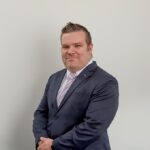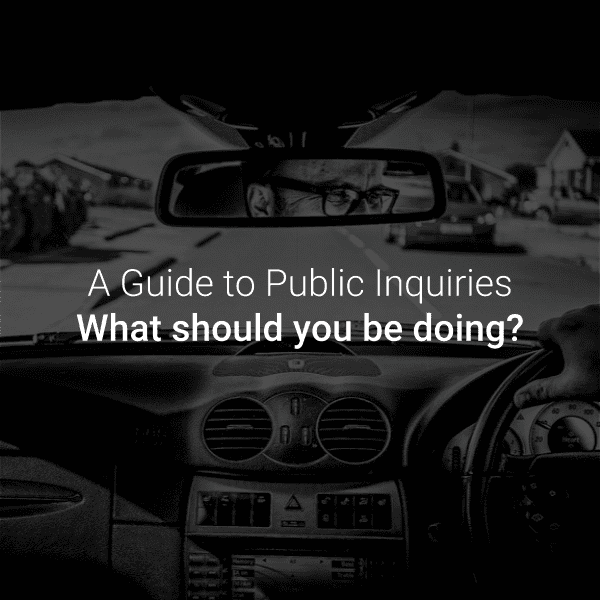Transporting your Horses – The Law and how to Avoid Falling at the First Hurdle
Motoring Factsheet No. 3
Steve Roberts, of Richard Nelson LLP, runs through some of the key aspects of the law and how it affects horse transport and considers how best to ensure constant compliance with the legislation.
Transporting horses between events can be a logistical nightmare.
Not only do you have to contend with ensuring you have sufficient capacity to safely and comfortably transport your horses, you must also ensure that you safely navigate the various legal rules and regulations to make sure you are not committing an offence for which you could end up in Court and be fined and or have your driving licence endorsed with penalty points and, in certain circumstances, disqualified from driving or even imprisoned.
Driving Licences
It is essential that a driver of any vehicle ensures that they have the correct driving licence for the size and type of vehicle used.
Where the gross vehicle weight is below 3.5 tonnes, the driver of any vehicle will only need a normal category B licence (this is the ordinary private car licence). A standard category B licence will allow you to tow a trailer up to 750kg (subject to your vehicle’s capacity to tow such a trailer) where the total train weight does not exceed 3.5tonnes. Where the trailer is in excess of 750kg, a B+E licence is needed.
Where the gross vehicle weight is between 3.5 tonnes and 7.5 tonnes, the vehicle can be driven by somebody with a category C1 licence. Holders of a C1 licence are entitled to tow trailers up to a maximum gross weight of 0.75 tonnes.
Drivers who passed their driving test for a category B licence before 1st January 1997 receive automatic entitlement to drive C1 category vehicles. Those drivers who passed their category B licence after 1st January 1997 will have to sit an additional test to be able to drive C1 category vehicles. A standard C class licence allows the towing of a trailer up to 750kg (again subject to the vehicle’s capacity to pull such a trailer), to pull vehicles of a higher weight, a C+E licence is needed.
Overloading
Driving a horse box which is overloaded is an offence and the police are clamping down on this practice with traffic officers often present at meetings to escort suspect overloaded vehicles to VOSA weighbridges to be checked.
It is important for drivers towing horse boxes and driving horse lorries to be aware of how to load them correctly, as it is not just the weight which can cause problems but also the distribution of that weight over the axles. An incorrect distribution of the weight will in itself also constitute an offence which can be dealt with in the Magistrates Court.
Many insurers will also void insurance where a vehicle has been overloaded which would lead to an unenviable position should an accident happen.
So how do you ensure that you do not fall foul of the legislation?
All vehicles over 3.5 tonnes are tested by VOSA when first registered. These vehicles are given a certificate which will show the Gross Vehicle Weight (GVW) in metric tonnes. To establish how much weight can legally be carried by a vehicle it should be taken (fully emptied save for a driver and full tank of fuel) to a local VOSA weigh-station and weighed. The weight taken by VOSA here is described as the unladen weight. In order to establish how much weight your vehicle can carry, the unladen weight should be deducted from the GVW to give a weight limit known as the payload.
The payload is the amount a vehicle can legally carry without an offence of overloading being committed.
It is essential when purchasing any vehicle for the purpose of transporting horses to check the payload. When you consider the weight of horses, feed and water, even a substantial payload can rapidly be exhausted.
Operator licensing
An operator’s licence is required by anybody who is driving a vehicle with a gross vehicle weight of more than 3.5 tonnes for carrying any kind of goods and/or livestock in connection with a business.
The question here to ask yourself is whether your equestrian activity can be said to be in connection with a business? In order to answer this question you should consider the following factors:
- Is your equestrian activity a hobby?
- Are you deemed to be of amateur status?
- Is your expenditure more than you could ever hope to receive in prize or sponsorship money?
- Your equestrian activity is not connected to your day-to-day work.
If the answer to all of these questions is yes, you should not need an operator’s licence to transport your horses. If the answer to any of those questions is no, you should give serious consideration to applying for an operator’s licence. You may wish to seek legal advice to discuss your position and to see whether you can be assisted in the operator’s licence application process.
Certificate of competence for the handling and transporting of horses
A certificate of competence for the handling and transporting of horses is required where horses are transported in relation to business activity (again a similar test as above should be conducted). For full details of the requirements of the certificate of competence and how to obtain one, visit the DEFRA website at www.defra.gov.uk
Even where horses are not carried in connection with a business, the driver of a vehicle containing horses must ensure compliance with the Welfare of Animals During Transit Regulations 2006. These regulations will almost certainly already be complied with as owners are keen to ensure the safety of their horses in transit in any event. The full regulations can again be found at DEFRA but a couple of the key points from those regulations are the following:
- Maximum transportation of 24-hours with a stop at least every 8 hours for feeding and water if required;
- Horses over the age of 8 months must wear a halter during transportation.
Driver hours and tachographs
Vehicles with a GVW of more than 3.5 tonnes (or vehicle and trailer combinations exceeding this weight) used in connection with carriage of goods or burden are required to have tachographs fitted and the drivers of such vehicles must comply with the relevant EU driver hours rules. However, there are some exemptions:
- In respect of vehicles (and vehicle trailer combinations) which have a GVW of between 3.5 tonnes and 7.5 tonnes, so long as the vehicle is being driven for personal use, drivers do not need to ensure a tachograph is fitted to their vehicle nor do they need to ensure compliance with the EU driver hours rules. This means that even where a vehicle is being driven for commercial use and the GVW exceeds 7.5 tonnes, a tachograph must be fitted and driver hours rules complied with.We would suggest that any driver who comes under these rules and regulations, seek further advice in respect of compliance with these rules but we outline below the rules to highlight the difficulties that many horse owners will face should they find themselves in a position where the rules apply.
- In respect of the EU driver hours rules, it is important to remember that they do not just apply to the day that the person is actually driving, but actually apply for the whole of the working week.
The first issue is, that under the rules, a person can only drive a maximum of 9 hours a day (although this is extendable to 10 hours no more than twice a week). This, of course, is reasonably easy to accommodate in respect of transport of horses. Most venues across the UK will be within 9 to 10 hours driving time and, if any further, it would be unlikely that you would want to exceed this legal limit in any event.
The next issue is that for every 4.5 hours of driving, a 45 minute break must be taken. This can be divided into 2 periods; the first must be at least 15 minutes and the second of at least 30 minutes over the 4.5 hours of driving. Again this should not prove too much of an inconvenience in respect of horse transport, as most non-professional drivers in this instance are unlikely to want to drive extended periods without a break and stops are likely to be required to feed and water horses on long drives.
Issues relating to weekly rest periods can be much more problematic. It is essential that a driver has a regular weekly rest of 45 hours per week. This can be reduced to 24 hours as long as the time is later compensated. The difficulty that is envisaged for those engaged in horse transport is where a person works 9am-5pm on a regular week day and is looking to transport their horses to a show on the weekend. Under the regulations, as the person has carried out work during the week (even where it is not driving work), they must have a weekly rest period of 45hours. During this period, they cannot drive an affected vehicle. Whilst this rest can be reduced to 24 hours (to be later compensated), it leaves a position where you would be unable to drive your vehicle on a Saturday and Sunday in the circumstances described.
Speed Limits
| Vehicle | Speed Limit Motorways; | Speed Limit Dual Carriageway | Speed Limit Other Road |
|---|---|---|---|
| Cars, small vans and dual purpose vehicles. |
70
|
70
|
60
|
| Goods Vehicle, laden weight not exceeding 7.5 tonnes |
70
|
60
|
50
|
| Goods Vehicle towing 1 trailer (combined laden weight not exceeding 7.5 tonnes) |
60
|
60
|
50
|
| Goods vehicle, laden weight exceeding 7.5 tonnes |
60
|
60
|
50
|
| Articulated Goods Vehicle, max laden weight exceeding 7.5 tonnes |
60
|
50
|
40
|
Since 1st January 2008, all goods vehicles with a gross weight in excess of 3500kgs are required to have a speed limiter installed. The set speed of the limiter depends on the age of the vehicle.
Conclusions
The various pieces of legislation for carriage of goods and livestock can have some significant consequences for those looking to transport their horses, whether it be as part of a hobby or part of a business. If you feel that you need assistance or guidance in respect of any of the issues described in this article, you should contact a qualified solicitor to discuss your requirements and whether your are transporting your horses in accordance with the law.
For more information log onto www.defra.gov.uk or if you require legal advice contact Richard Nelson LLP on 02920 647513.




